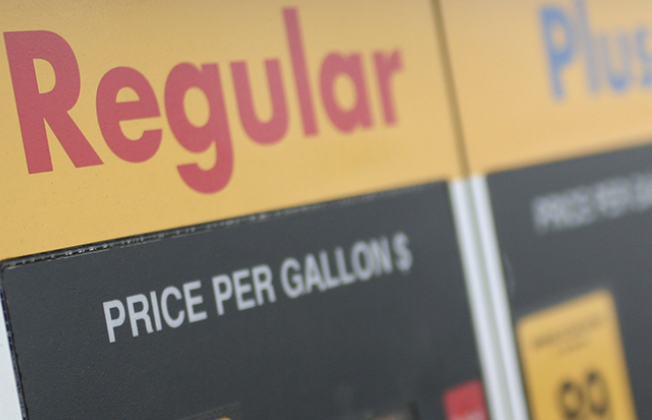Fears of a global economic recession led to oil prices dropping $7 a barrel last week, taking some of the pain out of pump prices. Decreased demand also put downward pressure on gas prices, as drivers fueled up less frequently during the first half of October.
According to the Energy Information Administration (EIA), gas demand decreased nationally from 9.47 million b/d to 8.28 million b/d, and total domestic gasoline stocks increased by 2 million bbl to 209.5 million bbl.
The combination of lower gasoline demand amid higher supply and fluctuating oil prices has contributed to the national average moving downward, along with many state and metro averages. If those trends continue, drivers can expect gas prices to continue to fall.

The national average pump price for a gallon of gas decreased three cents over the past week to hit $3.88. Today’s national average of $3.88 is 20 cents higher than a month ago and 56 cents more than a year ago.
Kentucky’s average for a gallon of unleaded is now $3.47, dropping a penny overnight, 5 cents lower on the week but still18 cents higher compared to a month ago. A year ago, the average in Kentucky was $3.07.
Lexington’s average is now at $3.39, steady overnight, but down 3 cents from a week ago, but still cents 9 cents higher than a month ago. A year ago, the Lexington average was $3.11.
In Northern Kentucky, Covington is at $3.77, down a penny overnight, 8 cents lower on the week, but still 41 cents higher on the month. A year ago, Covington was at $3.13.
In Eastern Kentucky, motorists in Morehead are finding the gas price average at $3.59, which is stable overnight and steady on the week, but 17 cents lower on the month. A year ago, the average price in Morehead was $3.14. Those in Hazard are seeing the gas price average at $3.54 today, stable overnight, down a penny on the week, and 4 cents lower on the month. A year ago, the average in Hazard for a gallon of regular was $3.16.
Pikeville is at $3.35 today, up a penny overnight, 2 cents lower on the week and 16 cents higher on the month. A year ago, the average in Pikeville was $3.10. Ashland is at $3.40 today, down a penny overnight, 2 cents lower on the week and 12 cents lower on the month. A year ago, the price in Ashland was $3.13.
Around the Commonwealth, the highest gas prices remain primarily in the northern tier of counties. The highest county-level average gas price today is in Pendleton, still at $3.89, followed by Campbell at $3.83. The cheapest spot for gas in the commonwealth today can be found in Simpson County at $3.20.
Checking nearby, the average price for a gallon of regular today (and change compared to last week) in Ohio is at $3.80 (-0.12), West Virginia $3.56 (+0.03), Virginia $3.57 (+0.08), Tennessee $3.37 (-0.02), Indiana $4.07 (-0.12), Illinois $4.33 (-0.07) and Missouri $3.46 (-0.01).
Across the nation, the high spot remains California at $6.05, which is down a dramatic 28 cents from last week, followed by Alaska at $5.42. The lowest state averages can be found in Georgia at $3.25, followed by Texas at $3.29.
The nation’s top 10 largest weekly decreases: California (−28 cents), Wisconsin (−23 cents), Oregon (−19 cents), Nevada (−18 cents), Michigan (−16 cents), Washington (−14 cents), Alaska (−12 cents), Indiana (−12 cents), Ohio (−12 cents) and Arizona (−10 cents).
The nation’s top 10 least expensive markets: Georgia ($3.25), Texas ($3.30), Mississippi ($3.33), South Carolina ($3.37), Arkansas ($3.38), Tennessee ($3.38), Louisiana ($3.40), Florida ($3.40), Alabama ($3.43) and Missouri ($3.46).
At the close of Friday’s formal trading session, West Texas Intermediate decreased by $3.50 to settle at $85.61. Crude prices decreased last week as global economic fears pulled crude prices lower. For this week, crude prices could continue to weaken as interest rates rise globally, which could lead to a recession. If a recession occurs, crude prices would likely reduce alongside demand. Additionally, EIA’s latest weekly report showed that total commercial crude inventories increased by 9.9 million bbl to 439.1 million bbl.
AAA Blue Grass





















